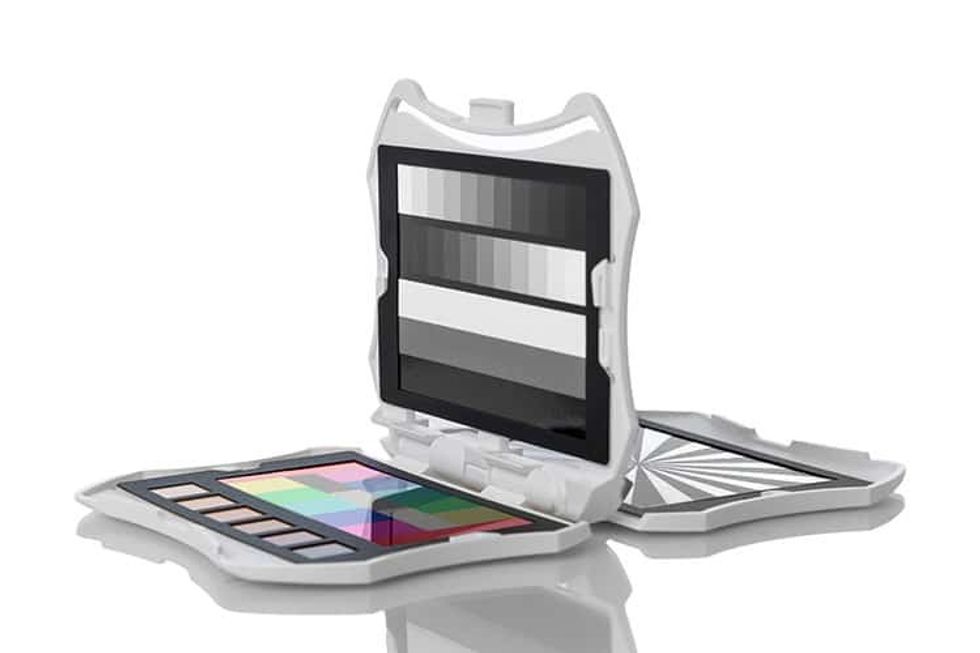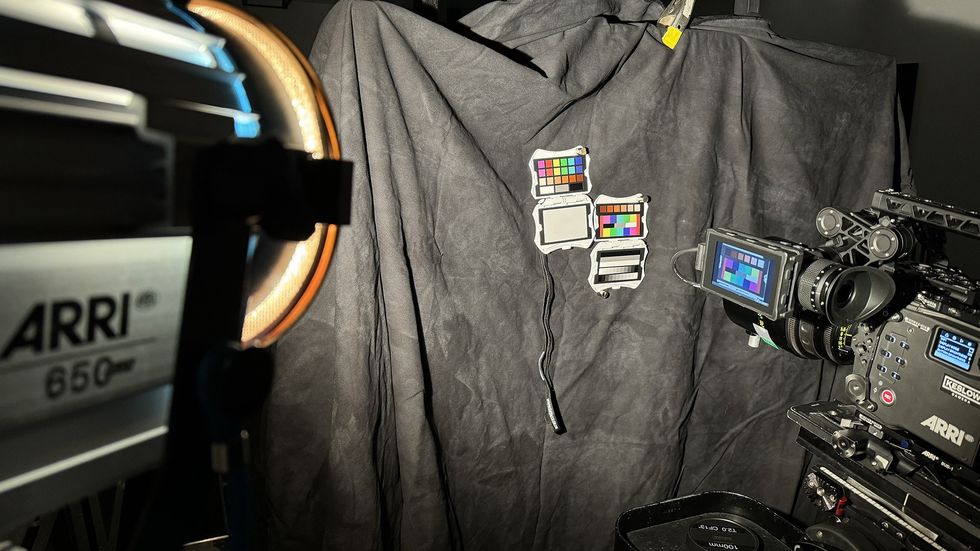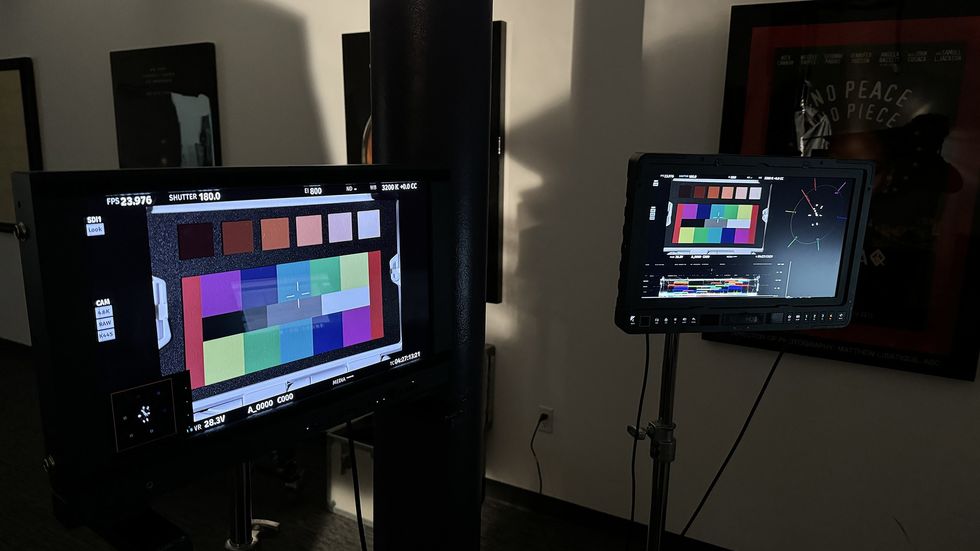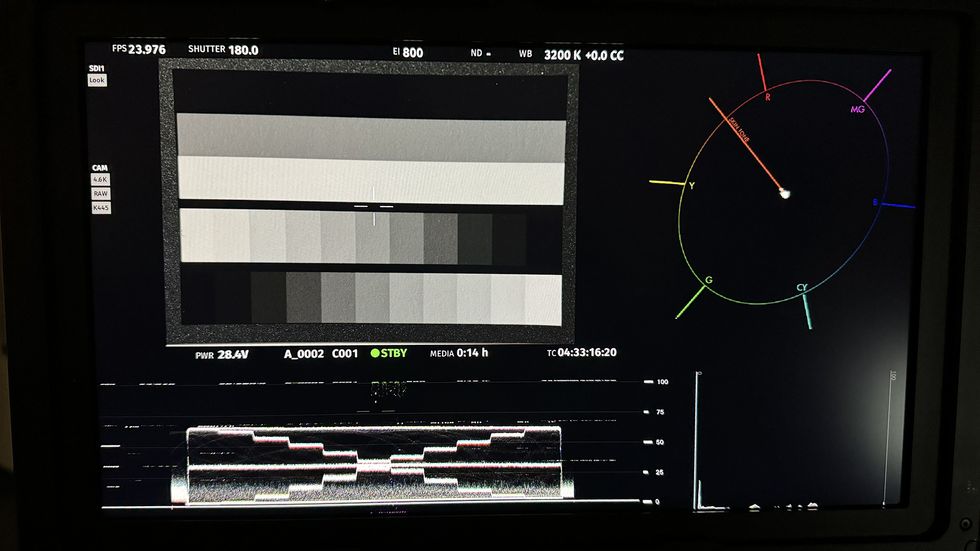The Datacolor Spyder Checkr Video Brings Data to Color
With all the exposure and color tools at our disposal, one thing is missing from our workflow. Datacolor aims to change that.

Whenever I sit down to look at my footage from a project, my workflow usually consists of using a display LUT or a Color Space Transform (CST) modifier in DaVinci Resolve to correct my footage from RAW or Log.
This gives me a somewhat accurate Rec.709 color space, which I also deliver in. But no matter how accurate the specific LUT or CST aims to be, it's never perfect from a data perspective.
There are always variables at play that skew the image just slightly, and getting a proper Rec.709 output for clients or stakeholders is crucial, especially when working with brands that require a specific color palette.
This is where the new Datacolor Spyder Checkr Video color reference chart comes in. With a new patent-pending Color Pattern Card and a few other critical tools all in one kit, the Spyder Checkr Video aims to bring the data and precision back into your color workflow.
I visited Keslow Camera with DoP Indeana Underhill to better understand how this tool could help my work. Here's what we discovered and why you need the Datacolor Spyder Checkr Video as part of your Rec.709 workflow.
What Is The Spyder Checkr Video?
A color chart is a card with several rows of colored squares. This is printed on glossy archival paper to achieve better blacks and is perfectly calibrated to a specific color space. With just this tool, creatives can better understand the color shift their footage may have.
The Spyder Checkr Video includes a newly designed (and patent-pending) Color Pattern Card specifically made for the traditional vectorscope pattern, which is perfect for video. It also comes with a more standard-designed color patch card if you're doing photography or hybrid work.
Both cards are calibrated for the Rec.709 colorspace, making this an invaluable tool for broadcast or web delivery.

The Spyder Checkr Video
Datacolor
In addition, there are three additional cards you can put inside the ergonomic case.
- A gradient grey scale card with two rows of grey scale bars as well as three solid bars of white, black, and 50% grey.
- A solid, neutral grey card for white balance.
- A focus star card.

All the cards included in the Spyder Checkr Video
Datacolor
Between all these cards, creatives can immediately understand if they're in focus, have proper exposure and white balance, and if they have any color shift in their footage. While you can always rely on in-camera tools such as false color, focus peaking, and Kelvin-accurate white balance features, the accuracy is always going to be off.
This could be due to lighting variables, camera manufacturer choices, and overall feature design.
By using a neutral grey card with your scopes, your white balance and exposure will always be spot on. The Color Pattern Card can let you know if your colors are off right in camera and will allow you to compensate in post. The focus star will give you a precise point to make sure your focus is tack sharp.

Using this tool should be a critical step in your workflow.
Datacolor
Discovering Data In Color
I've worked with Color Charts before, but only on projects where I was the director. I've never had any hands-on time with one from the technical side of things, so getting a chance to see how this can be used in my workflow was a great learning experience.
Our workflow at Keslow was simple: set up an ARRI Alexa 35, a SmallHD monitor with scopes (specifically vector scopes and histogram), record interior and exterior footage with the Spyder Checkr Video, and bring the whole thing into DaVinci Resolve.

Our ARRI Alexa 35 setup for our tests thanks to Keslow Camera
Right off the bat, we had answers to questions we never knew we had. The ARRI Alexa seemed to shift its green way towards cyan.
Even when viewing the ARRI RAW footage in Resolve and utilizing the official ARRI LogC4 t -Gamma 2.4 Rec.709 display LUT, we got the same results.

Seeing the new Color Pattern Card in our scopes.
While ARRI has developed this look for a reason, sometimes this might be a problem when trying to get a specific RGB color for a brand. Although, we do have to say that the skin tones were always spot on when looking at our scopes.
By using the neutral grey card in combination with the new Color Pattern Card, Underhill and I got a perfect exposure and Rec.709 color space. To achieve the latter, we used the HUE vs HUE and HUE vs SATURATION tools in different nodes within Resolve to nudge our colors into position using the vectorscope.

LEFT: ARRI LogC4 Rec.709 LUT RIGHT: Correction using Color Pattern Card and vectorscopes
The look from the ARRI display LUT seems to be more creatively driven, and when working on projects where color precision is more creative than necessary, this is a great starting point for your color grade.
But when I used the Spyder Checkr Video and my vectorscopes to correct the image, I had a better understanding of how true to life my colors are.
And the image on the right, shown above, better represents what I saw on the day we shot this footage.
But even without even looking at the image, I knew my colors and exposure were spot on in our Rec.709 display just by looking at the data in our scopes. And having it in such a compact package made it efficient and easy to use.

Our scope when using the gradient grey scale card
Datacolor SCV310 Spyder Checkr Video
Ideal for videographers, professional filmmakers, and content creators, the Datacolor Spyder Checkr Video Color Chart is a pocket-sized, professional color reference system. To help ensure color accuracy and consistency across a range of cameras and lenses, Spyder Checker Video works with vectorscopes, waveform monitors, and professional video editing software. The glossy cards allow for high color saturation, wider color gamut, and easier flare identification.

By using the Datacolor Spyder Checkr Video, I managed to get perfect exposure, focus, and color information from a quick glance at my scopes. While my cameras have focus peaking and histograms, I will make the Spyder Checkr Video a part of my toolkit to have data to back me up when those tools fail me.
And they have. I recently shot a project where the in-camera focus peaking showed tack-sharp focus, but when I saw the footage on a 27-inch display, it was off. That's not something I would want on future projects, and now I have a tool to make sure that won't happen again.
If this is a tool you'd like in your kit, the Datacolor Spyder Checkr Video is $20 until January 20th, 2024! To learn more about the tools you need to bring precision data back into your workflow visit the Datacolor website.
.











